How to Inspect & Replace the Main Oxygen Sensors
1990-1994 Lexus LS400
This tutorial will show you how to install universal oxygen sensors. A universal oxygen sensor requires you to cut off the wiring harness from the old OEM sensor and splice it to the new universal sensor. It does take a little extra time to do this but you will save a LOT of money if you go the universal route. I replaced all 4 of my oxygen sensors for a little under $150...many places to buy them. You do not need a special oxygen sensor wrench to replace these sensors. However, you will need one if you want to torque the sensors correctly. Call your local Autozone to see if they have an oxygen sensor wrench available to loan out.
Tools Needed:
- Ramps
- 22mm or 7/8" box wrench
- Multimeter (optional)
- Wire stripper / crimper
- Lighter
Parts/Supplies Needed:
- 2 main oxygen sensors
- Electrical tape
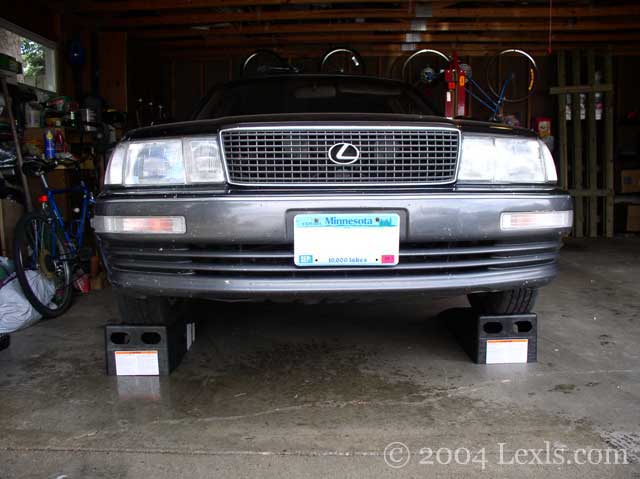
1) Put the car up on ramps. Jacking up the car and putting it on jack stands will not give you enough room to work unless you have a high jack. Ramps give you more room, even though it's not that much.
2) Important: Wait a while for the car to cool down. If you do not wait there is a good chance you'll be burned on the exhaust components or the engine. Your hands are right by the engine and exhaust components when removing these sensors and these components get very hot very fast. Be careful and use common sense. I waited over an hour for things to cool down somewhat.
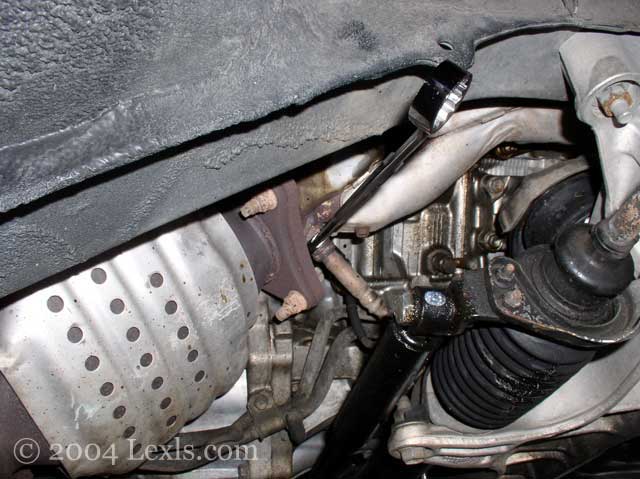
3a) Unscrew the RH main oxygen sensor using a 22mm or 7/8" wrench. Here you can see that there is just enough room to use a standard 22mm or 7/8" wrench. If your sensors are original it will probably take a little extra elbow grease to get them out.
3b) Unscrew the LH main oxygen sensor. This side is a little harder because the steering rack is in the way, but a standard wrench still fits.

4a) After you have unscrewed the sensor disconnect the RH main oxygen sensor wiring harness from the connector socket on the car. The arrow in this pic shows you the tab you need to push on while pulling on the base of the sensor wiring harness. Here I have already removed the sensor but I wanted to show you exactly how to release this connector. There isn't much room to work here so I found it was easier to unscrew the sensor first (which does twist the wires some) and then unclip and remove the sensor.
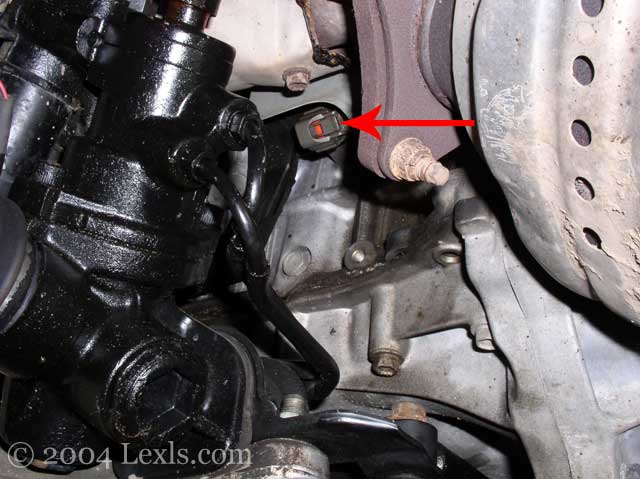
4b) Disconnect the LH main oxygen sensor from the connector socket. The arrow shows you the tab you need to push on while pulling the base of the sensor wiring harness.

Optional: Inspect the heater resistance of the main oxygen sensors. To do so, connect ohmmeter leads to the terminals of the wiring harness that go to the black wires. I have already cut of the wiring harness in this picture so it's easy to see the leads are connected to the black wires. The resistance should be 5.1-6.3 ohms at 68 degrees. If the resistance is not in this range the sensor needs to be replaced. You can see here that this sensor reads 8.7 ohms so it needs to be replaced.

New universal oxygen sensor vs. OEM oxygen sensor. The Walker sensor comes with the sensor, butt-connectors, heat shrink tubing, high-temp antiseize, and instructions. The OEM sensor is about 10.5" inches end to end.
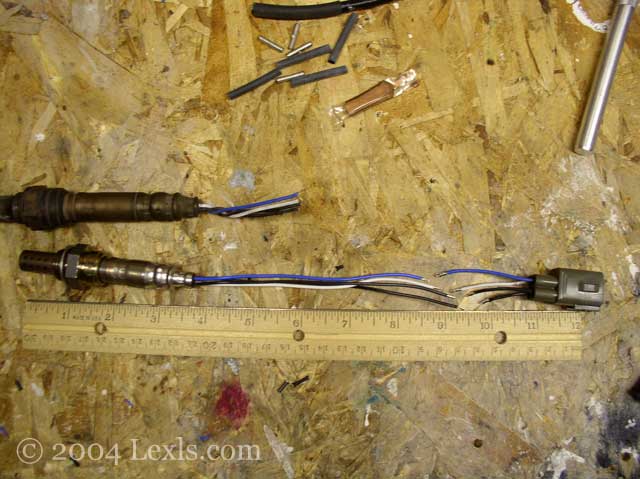
5) Cut the wiring harness off of the old sensor a few inches from the base of the old sensor. Then stagger the 4 wires on the wiring harness and the new sensor. Then strip a 1/4" inch off the ends to expose the wire. The finished product needs to be at least as long as the OEM sensor (10.5" inches) or slightly longer. Mine ended up being about 12" inches in length.
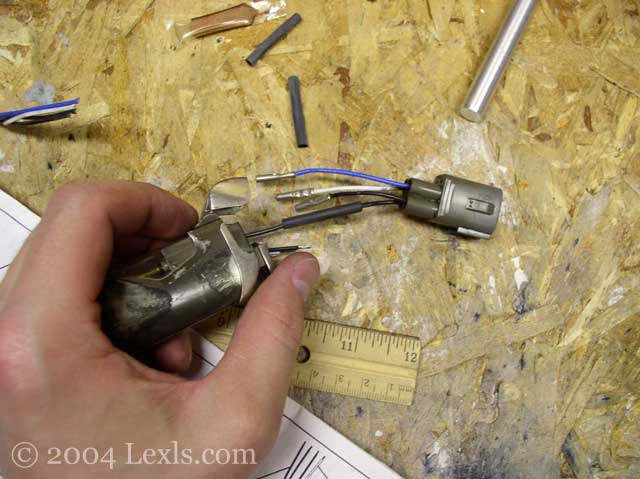
6) Crimp the 4 butt connectors to wires on the harness. Then, one by one, slide the heat shrink tube over a wire and crimp the wire from the sensor to the same colored wire on the harness. Polarity is not important on the black wires. Once the wire has been crimped line up the heat shrink tubing and use a lighter to shrink it.

Here's what it should look like when all 4 wires have been connected and the heat shrink tubing is on.

7) Finish the sensor off with some electrical tape.
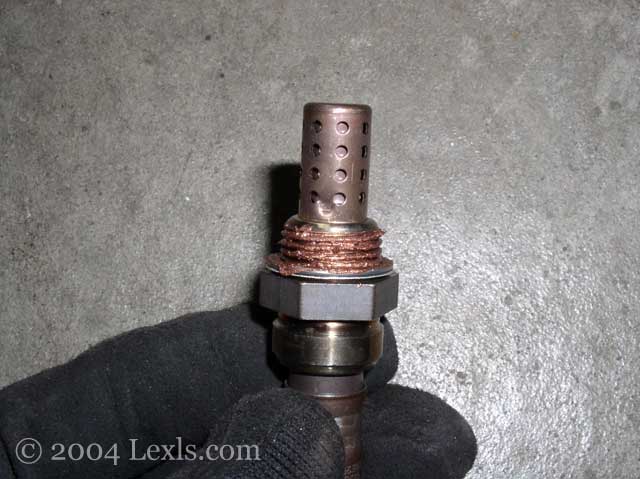
8) Apply the high-temp antiseize to the threads of the oxygen sensors.
9) Screw in the sensors by hand so you know the threads are aligned properly and then torque them to 33 ft-lbs (450 kgf-cm, 44 N-m). Since I didn't have an oxygen sensor wrench I just tightened them.
10) Clip in the wiring harnesses.
If you found this information useful please support the site by clicking the button below and making a donation. Thank you.
